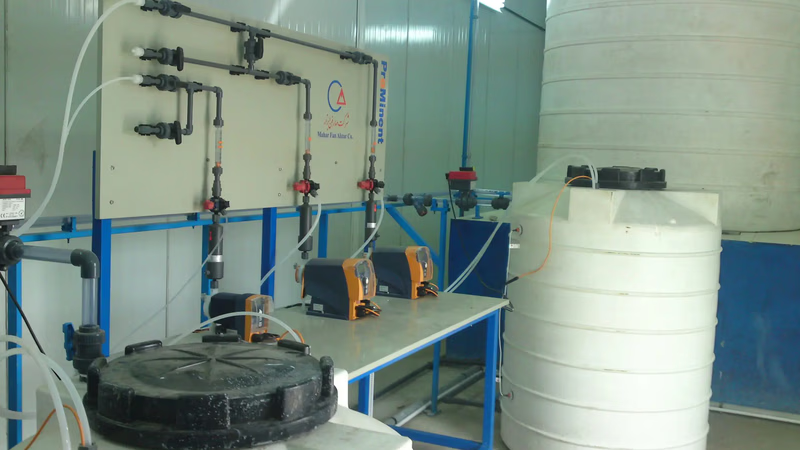
Chlorine gas: essential for sanitation and industrial applications.
Chlorine is a chemical element with the symbol Cl and atomic number 17. It is a yellow-green gas at room temperature and is a member of the halogen group of elements in the periodic table. Chlorine is highly reactive and is known for its strong oxidizing properties. In its pure form, chlorine exists as diatomic molecules (Cl2), which means two chlorine atoms are chemically bonded together. This molecular form is responsible for the characteristic pungent odor of chlorine gas, similar to the smell of bleach.
Chlorine is widely used for various purposes due to its disinfectant properties. It is commonly used to kill bacteria, viruses, and other microorganisms in water treatment processes, swimming pools, and the sanitation of surfaces. Chlorine compounds, such as sodium hypochlorite (bleach), are also used as household cleaners. Additionally, chlorine is used in the manufacturing of a wide range of products, including plastics, solvents, pesticides, and pharmaceuticals. While chlorine has many beneficial applications, it is important to handle it with caution because it can be toxic and harmful if inhaled or ingested in high concentrations.
Chlorine, which is a greenish-yellow gas, is one of the most widely used halogens in Group IV of the table of chemical elements, known as CL and atomic number 17. Chlorine is highly volatile and its most important properties are high oxidizing power and ability to eliminate bacteria, fungi and contaminant particles in water and sewage. Pure chlorine is a green gas which is used not only for bleaching and disinfection applications, but also as an important part of organic material in industry and the production of chemicals and plastics. Chlorine is halogen and is in group IV in the periodic table. Chlorine gas is greenish-yellow, two and a half times heavier than air, has a very bad and suffocating odor and is very toxic.
This element is an oxidizing, bleaching and disinfecting agent. Chlorine, as part of table salts and other compounds, is abundant in nature and necessarily in most organisms. Chlorine is toxic and dangerous, and safety precautions must be taken when using it. In general, today, this high-consumption material has become one of the most important and best tools used by humans that can be used everywhere. Scientists have discovered the important properties of chlorine and chlorinated products as a result of decades of research. They found that chlorine played an important role in the production of safe drinking water, the production of medicines, germicides, and the manufacture of sanitary ware, other chemicals such as tear gas, and fire extinguishers.
Chlorine is widely used to kill bacteria, viruses, and other microorganisms in water treatment systems, ensuring safe drinking water supply. Chlorine is added to swimming pools to kill bacteria and maintain proper water hygiene. Chlorine compounds, such as sodium hypochlorite, are commonly used as bleaching agents and disinfectants in household cleaners and laundry products. Chlorine is utilized in the production of a variety of chemicals, including PVC (polyvinyl chloride) for plastics, solvents, pesticides, pharmaceuticals, and many other industrial products. Chlorine compounds are used in the bleaching process of paper and pulp production. Chlorine is an essential component in the synthesis of various pharmaceuticals and medicines.
Chlorine was first discovered in 1774 by Swedish chemist Carl Wilhelm Scheele. It was later named \"chlorine\" in 1810 by Sir Humphry Davy, an English chemist, derived from the Greek word \"chloros,\" meaning green-yellow. Chlorine is a gas at room temperature and forms a yellow-greenish color. It has a strong, choking odor, resembling the smell of bleach. Chlorine has a relatively high density compared to other gases. It is slightly soluble in water, and when dissolved, it forms a strong acid known as hydrochloric acid. Chlorine is highly reactive and is classified as a strong oxidizing agent. It readily reacts with many elements and compounds, often leading to the breaking of chemical bonds. Chlorine can react with metals, nonmetals, and organic compounds, making it useful in various chemical reactions and industrial processes.
-
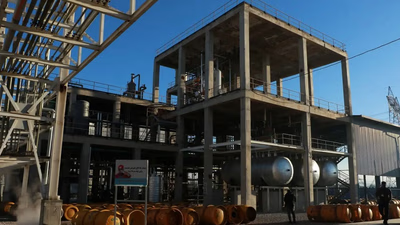
Chlorine prices in West Asia are significantly influenced by the availability and cost of natural gas, a primary feedstock for production. Countries like Saudi Arabia, Qatar, and the UAE benefit from abundant natural gas reserves, allowing them to produce chlorine at competitive prices. This capability positions them as key exporters in the global market, where their export volumes can affect supply-demand dynamics and pricing. The price of chlorine is generally reasonable, but quality varies; high-quality chlorine is white and has a gas-like smell, while lower quality is yellowish. Market conditions such as currency exchange rates, trade policies, and tariffs also play crucial roles in determining chlorine prices globally. The relationship between West Asian chlorine prices and global markets is complex and dynamic, influenced by demand from major consuming regions like North America and Europe. As West Asian producers leverage their cost advantages, they may exert downward pressure on global prices if supply outpaces demand. Overall, while regional factors are significant, broader economic trends and industry shifts also shape the pricing landscape for chlorine.
-
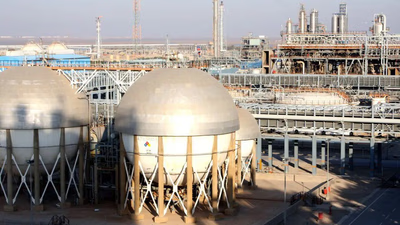
Chlorine exists primarily as a gas, characterized by its yellow-green color and pungent odor. It can be liquefied at temperatures below -34. 04°C and solidified at temperatures below -101. 5°C, although the solid form is rare and mainly used in specialized settings. Chlorine gas is widely utilized for water disinfection, pool sanitation, and various industrial applications due to its ease of handling. Liquid chlorine, which is amber-colored and denser than water, is commonly used in larger-scale operations like water treatment plants but requires careful handling due to its corrosive nature. Solid chlorine, typically found in powder form, serves specific purposes such as disinfecting surfaces and water purification but is less common in everyday use. Each form of chlorine has distinct advantages and safety considerations; for instance, while chlorine gas is cost-effective with a six-month usage period per capsule, it poses risks of leakage if not stored properly.
Liquid chlorine"s effectiveness diminishes over time and reacts quickly with other chemicals. Overall, understanding the properties and applications of each chlorine state is crucial for safe handling and effective use in various industries. "
-
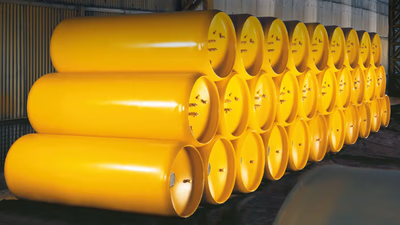
Chlorine plays a crucial role in various applications, primarily in water purification and disinfection. It effectively eliminates bacteria, viruses, and other microorganisms, ensuring safe drinking water and preventing waterborne diseases. In swimming pools, chlorine maintains hygiene by controlling algae and microbial growth. Additionally, chlorine compounds like sodium hypochlorite serve as bleaching agents across industries, including textiles and paper production. Chlorine is also integral in pharmaceuticals, contributing to the synthesis of antibiotics and antiseptics. Its versatility extends to odor control in waste management and the production of everyday items such as plastics and solvents. Despite its benefits, chlorine must be handled with care due to its toxic nature; proper safety measures are essential when working with it. The chemical"s ability to produce hypochlorous acid enhances its effectiveness in attacking pathogens quickly. Overall, chlorine"s diverse applications underscore its importance in industrial processes and public health.
-
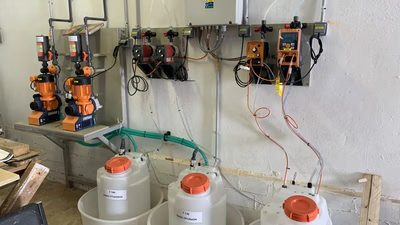
The Middle East is a key player in chlorine production, leveraging its abundant natural gas resources as a primary feedstock. Countries like Saudi Arabia and the UAE have established large-scale production facilities that cater to both domestic and international markets. The region"s strategic location enhances its export capabilities, facilitating access to global markets. Government support through policies and incentives has further bolstered the chemical industry, encouraging foreign investment and technology transfer. Rapid urbanization and industrial growth within the region have increased demand for chlorine-based products, including those used in water treatment and manufacturing. Regional cooperation among West Asian countries optimizes resources for efficient chlorine production, with nations like Iran and Qatar also contributing significantly to the market. The development of integrated petrochemical complexes supports the entire chemical value chain, enhancing competitiveness while diversifying economies away from oil dependency. As these countries continue to invest in their chemical sectors, they aim to create new revenue streams and employment opportunities. "
-

Chlorine, a yellow-green gas with the symbol Cl and atomic number 17, is a highly reactive halogen known for its strong oxidizing properties. It exists as diatomic molecules (Cl2) and has a pungent odor similar to bleach. Chlorine is widely utilized for its disinfectant capabilities, effectively eliminating bacteria, viruses, and other microorganisms in water treatment processes, swimming pools, and surface sanitation. Its compounds, such as sodium hypochlorite, serve as household cleaners. Beyond disinfection, chlorine plays a crucial role in manufacturing various products including plastics, solvents, pesticides, and pharmaceuticals. Despite its beneficial applications, chlorine must be handled with care due to its toxicity when inhaled or ingested in high concentrations. Chlorine"s significance extends to the production of safe drinking water and the synthesis of essential chemicals in industries. Its discovery dates back to 1774 by Carl Wilhelm Scheele and was named by Sir Humphry Davy in 1810. Chlorine"s versatility makes it an indispensable element across multiple sectors.





